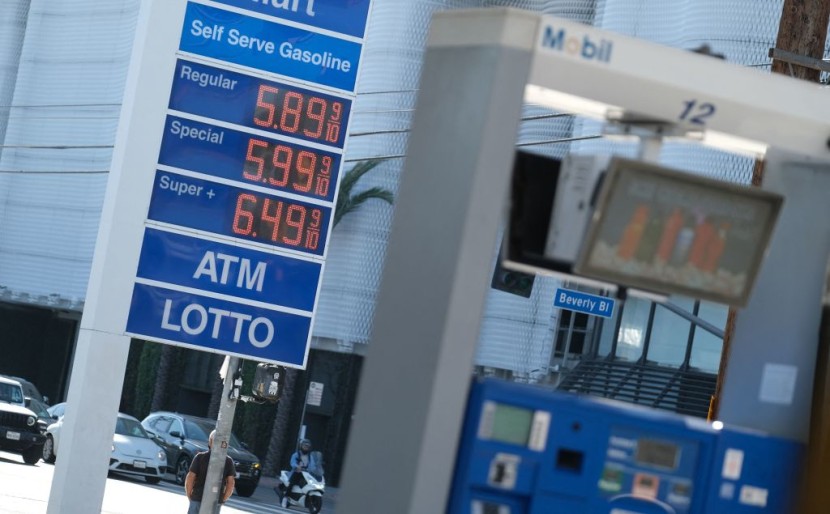
"What do you wish wasn't so expensive?" was the most upvoted thread on Reddit's homepage on Wednesday. By early afternoon, it had gotten over 22,000 comments, with users venting their frustrations about rising rent and housing prices, the often prohibitive cost of US healthcare, particularly dental work, insulin, and therapy, and the price of everyday goods like groceries eating into their budgets due to inflation.
Several respondents also mentioned that mental health care is frequently overpriced, which is especially problematic during a two-year pandemic in which depression and anxiety symptoms in young people have doubled, according to a recent Surgeon General assessment. During the pandemic, drug overdoses in the United States reached 100,000 in only one year. Overdose deaths had been on the rise for more than two decades previous to COVID-19, as per Market Watch.
Many Redditors also pointed out that popular consumer items and everyday basics like gasoline for automobiles (and the cost of cars), grooming products like razors and bras, and home utilities like internet and electricity are all much too expensive right now. According to data from the Bureau of Labor Statistics, Americans are paying 25.1 percent and 6.5 percent more for gas utilities and electricity, respectively, than they were last November. That's the biggest yearly increase in gas since roughly 2008, and the most in electricity since 2009.
This has been a familiar theme in recent conversations, both online and offline, since wholesale prices increased by 9.6% this year, the quickest rate of growth in 40 years, but it should be emphasized that the index was revised in 2014 using a new methodology. Last month, the consumer price index soared, causing the cost of living to rise at its quickest rate in 39 years.
What is the US inflation rate?
Last month, the country's worst spell of inflation in decades became a little worse. In November, inflation reached a 39-year high, driven by strong consumer demand, supply-chain snarls, and labor shortages in an economy still reeling from the consequences of the COVID-19 pandemic.
The consumer price index increased 6.8% year over year, the quickest rate since 1982, as costs for basics such as food and fuel, new and used automobiles, rent, and physicians' services, among other things, increased, according to the Labor Department. That's up from 6.2 percent in October, which was a three-decade high.
As a result, Americans are paying more for a variety of everyday necessities, monthly bills, and other items. Beef, chicken, and pork prices, as well as eggs, bread, and fresh fruits and vegetables, have all increased.
Additionally, if you were intending to do your Christmas shopping online, you may find increased pricing due to inflation. On Thursday, Adobe released online inflation figures for November, claiming that it had reached a new high of 3.5 percent year-over-year, USA Today reported.
Omicron, inflation put Americans to test
Per Boston Globe via MSN, the Omicron variant appears to be on track to accelerate the already high number of COVID-19 infections. Meanwhile, an economic virus created by the pandemic, a sudden and continuous rise in consumer prices, threatens consumers' and companies' financial well-being. The country will have to respond expertly to these threats without causing too much economic harm. It will be difficult to strike the correct balance.
Each new discovery about Omicron tightens the pit in our guts, making it seem like March 2020 in some ways. Professional sports games and Broadway musicals have been canceled, colleges have gone online, and the stock market has begun to sway.
There is a significant difference between then and now: around 61 percent of Americans are completely vaccinated, according to the US Centers for Disease Control and Prevention. Almost a third of them have also had a booster shot. COVID-19 treatment techniques have improved, and a hopeful medication from Pfizer might be accessible in a matter of weeks, albeit in restricted quantities.
However, early evidence suggests that Omicron spreads two to three times quicker than Delta and is more likely to trigger breakthrough cases. Even if the sickness it produces isn't as bad as Delta, we're still in for several months of misery as a large area of the country is afflicted, the death toll rises, and already overburdened hospitals and fatigued healthcare professionals break under the pressure.
Few of us want to witness the massive company closures and social distancing limitations that triggered the recession and displaced over 20 million Americans. The White House, the Centers for Disease Control and Prevention, and state and local public health authorities are left with few alternatives.
The first and most obvious objective is to increase vaccination and booster rates. Officials must press as hard as the courts will allow ensuring that everyone receives the complete set of shots (with only limited medical and religious exemptions). Employers should be given financial incentives to vax and grow their personnel, according to the federal government. Those who refuse to get vaccinated should be limited in their activities and where they can travel.
Related Article: Stimulus Checks Worth $575 Million Coming in January 2022; Who's Eligible for New Payments Next Year?
@YouTube
© 2025 HNGN, All rights reserved. Do not reproduce without permission.








